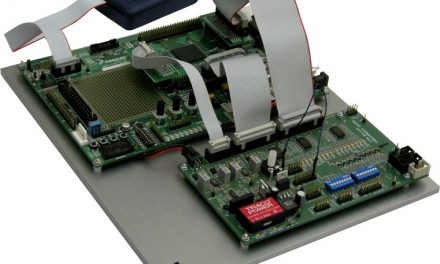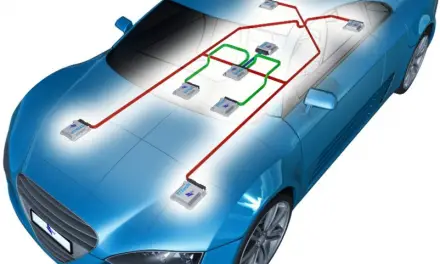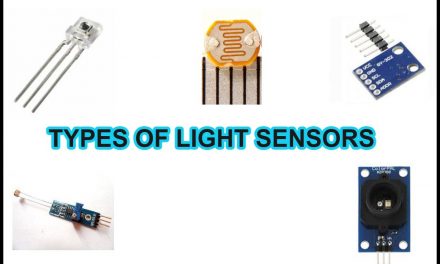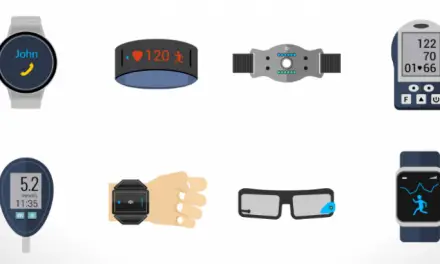Sensors are everywhere. They can be found in most of the devices that we use on a daily basis, and they help to bring about automation in our lives. This article explains the types of sensors, and gives a few examples of each sensor type.
Table of Contents
What is a sensor?
Before we begin, let us first define the sensor.
A sensor can be defined as a device that can be used to detect a physical quantity such as pressure, temperature, force, light, and convert the physical quantity into the desired output in an electrical signal. This signal is then used to measure the applied physical quantity that is present.
In some types of sensors, the sensor on its own may not be able to analyse the obtained signal. In such cases, a signal conditioning unit is the used to maintain the output voltage levels of the sensor and maintain it in the desired range with respect to the output device which we will be using.
In the signal conditioning unit, the sensor’s output may be filtered, amplified, or modified to meet the desired output voltage. An example is a microphone which measures an audio signal and converts the audio signal to drive an output circuit. The signal conditioning unit which in this case is an amplifier will be used to increase the strength of the input signal. Another sensor type that uses amplification is the load cell.
In this type of sensor, the physical quantity, mass is measured and amplified using special integrated circuits. These convert the very small signal produced by the senor into a larger, more pronounced signal that can be detected and processed by a processing device such as a microcontroller.
Types of Sensors
There are very many types of sensors. This section will give a very brief explanation of a few sensor types. Here the sensors have been classified based on property.
1. Light Sensors
These types of sensors are used to send out light – usually in the Infra-Red Spectrum, and detect the presence of light.
Examples include:
- Infra-Red transmitters – These emit infrared rays of light.
- Photodiodes – These are used to detect the presence of light. This includes light in the visible spectrum and in the Infra-Red spectrum.
- Light Dependent Resistors – In this sensor type, the resistance decreases or increases depending on the amount of light that is incident on it.
2. Temperature Sensors
These sensor types are designed to detect the variation in temperature.
Examples include: Thermocouples, Thermistors and Resistance Temperature Detectors (RTDs)
3. Pressure Sensors
These sensor types can measure the force, pressure, or weight present. They achieve this based on the principle that force, weight and pressure are derived quantities. The base quantity that they are derived from is mass. Through applying relevant computations, these derived quantities can be obtained from the base quantity.
Examples of these include: The strain gauge and load cells.
4. Sound Sensors
These types of sensors are used to detect audio signals, and convert these signals into electrical signals.
The microphone is the name used to define these sound sensors.
These microphones are of many types. These include: condenser microphones, crystal microphones, carbon microphones, etc.
5. Proximity and Displacement Sensors
These sensors types are sensors that are used to measure the position of one object relative to another object. These sensors usually have no contact between the sensor and the object being detected by the sensor, and they lack moving parts. This therefore results in them having very long functional lives, and them being very reliable.
Examples include: Inductive proximity sensors, capacitive proximity sensors, ultrasonic proximity sensors, photoelectric sensors, Hall Effect sensors, etc.
6. Gas and Chemical Sensors
These are sensor types that are used to detect the presence of a particular gas or chemical. These are usually used in heavy industries, and occasionally find applications in the home. An example is a gas sensor used to detect the presence of smoke.
They are classified into: semiconductor, infra-red, conductance and electromechanical gas and chemical sensors.
7. Image sensors
These types of sensors that from the definition, are used in image applications. They are frequently used in cameras.
Examples include: Complementary Oxide Semiconductors (CMOS) and Charge Coupled Devices (CCD)
Other key details to note about sensors
1. Active Sensors
These are sensors types that require an external power supply to be applied to them as they cannot operate independently.
Examples of such sensors include: Ultrasonic Sensors, Photoconductive Cells, LiDAR, IR sensors.
2. Passive Sensors
These are types of sensors that do not need a power supply to be applied to them as they can operate on their own.
Examples of such sensors include: Radiometers, film photography, Load cells.
Application of Sensors
1. Bar-Code Identification
In this type of application, the light sensors, together with laser beams are used to identify the Universal Product Code (UPC) present on the product’s packaging.
Note: The UPC is represented by the vertical black bars on a product’s packaging.
2. Transponders
In automobiles, radio frequency devices are quite commonly used. Transponders are present in the plastic key head of the car key. When the key is inserted in the ignition lock cylinder and turned, the computer transmits a radio signal to the transponder. The computer will not the engine start up until the transponder responds to the signal.
3. Home alarm systems
For these systems to work, proximity sensors are placed on each window of the house. These are all connected to the home alarm system’s main panel. When one proximity sensor indicates that a window has been moved, or opened, a signal is sent to the home alarm system which shows the zone where the breach has occurred and sounds the siren
4. Digital Scales
In this application, a number of load cells, usually four – with one in each corner, are present in the bathroom scale. A liquid crystal display screen is then added to display the mass of the individual in pounds or kilograms.
5. In mobile phones
There are very many sensors. The accelerometer detects the speed, the light sensor is used to automatically adjust the screen’s brightness. The microphone converts a person’s voice into electrical signals which are then stored in the device. The list is endless.
Conclusion
Sensors are in the devices that we use on a daily basis. They allow for us to carry out automation of tasks with ease. This article gave examples of the very many types of sensors, and showed the applications of the sensor types.
We hope you learnt something new.





